Garlic is a profitable crop that adds flavour to our meals and has numerous health benefits. Garlic farming has become profitable, with increasing demand for Garlic in the food and pharmaceutical industries. To make the most of this opportunity, it is essential to have a comprehensive business plan that covers all aspects of garlic farming, from cultivation to harvesting and marketing.
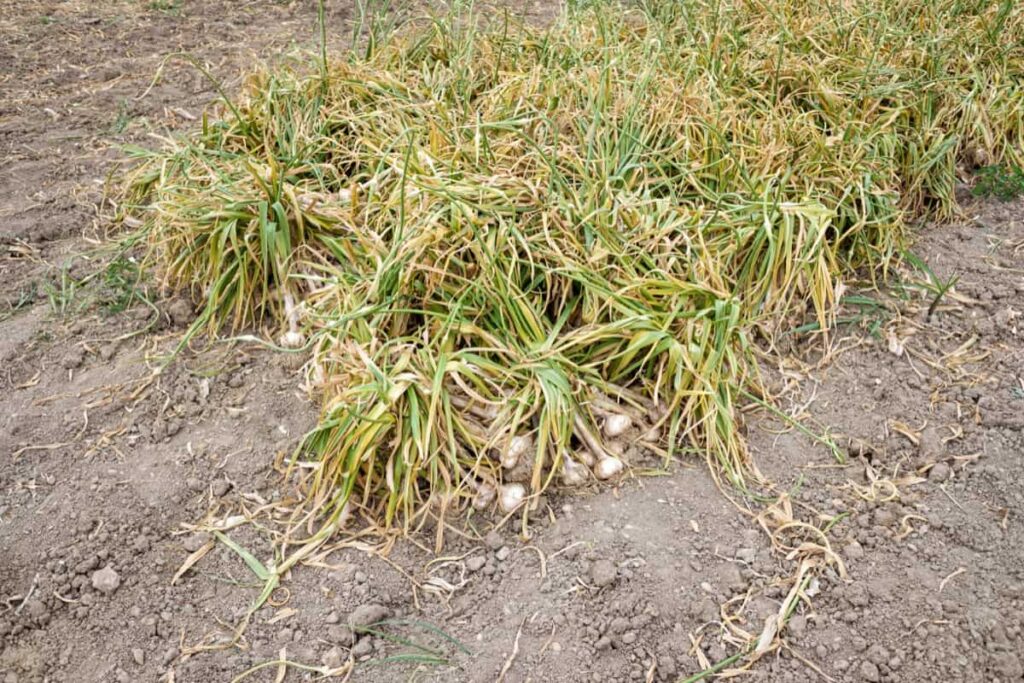
This blog post will discuss the key elements of a successful garlic farming business plan, including market research, site selection, planting and harvesting techniques, and marketing strategies. With accurate data and practical tips, you can maximize your profits and succeed in the garlic farming business.
Garlic Farming Business Plan
Introduction to Garlic Characters
The scientific name for Garlic, a bulbous plant of the Amaryllidaceae family, is Allium sativum. It can reach a height of 4 feet and bears blooms. Garlic can be reproduced sexually and vegetatively. However, the cloves are sown for cultivation to create an asexual reproduction. Since ancient times, Garlic has been a common ingredient in spices and medicine.
There are various varieties of Garlic for multiple uses. Garlic is consumed throughout the world for a variety of reasons, including its immune-strengthening and nutritional advantages. Garlic farming is a feasible business idea because it may be quite profitable.
Benefits of Garlic Farming
- Nutritional value: Garlic is highly nutritious and contains proteins, phosphorous, potassium, magnesium, carbohydrates, and ascorbic acid. Green Garlic is especially high in ascorbic acid.
- Allicin content: Healthy garlic bulbs contain allicin, a colourless, odourless, and water-soluble amino acid. Allicin has many health benefits, including anti-bacterial and anti-fungal properties.
- Volatile oil: Garlic contains about 0.1% volatile oil, which is made up of several compounds, including diallyl trisulfide, diallyl disulfide, and allyl propyl disulfide.
- Economic importance: Garlic is widely used in pharmaceutical industries as a flavouring agent and a raw material. It is also grown as a herbal medicine. Garlic farming can be profitable for farmers, especially in states like Madhya Pradesh, Gujarat, Rajasthan, Orissa, and Maharashtra.
- Health benefits: Garlic lowers blood pressure, reduces the risk of heart problems and diseases, and strengthens the immune system, among other health advantages. It is also thought to possess anti-cancer qualities.
- Culinary uses: Garlic is an essential ingredient in many cuisines worldwide. It adds flavour to dishes like soups, stews, and sauces. Garlic can also be used to make pickles and chutneys.
Popular Garlic Varieties
- Softneck garlic: Softneck Garlic is the most commonly grown garlic variety. It is usually white, with a mild flavour, and has good longer shelf life than other varieties. It is produced in California, China, and Mexico.
- Hardneck garlic: Hardneck garlic has a stronger flavour than soft-neck Garlic and is usually larger. It is grown in colder climates like Canada, the US, and Europe.
- Elephant garlic: Elephant garlic is a giant variety that produces large bulbs with a milder flavour. It is grown in California and Europe.
- Rocambole garlic: Rocambole garlic has a rich, nutty flavour and is popular in French cuisine. It is grown in the US, France, and Italy.
- Purple stripe garlic: Purple stripe garlic has a spicy flavour and is popular in Eastern European cuisine. It is grown in Ukraine, Russia, and the US.
- Creole garlic: Creole Garlic has a sweet and mild flavor and is popular in Cajun and Creole cuisine. It is grown in Louisiana, Texas, and Spain.
In case you missed it: Ginger Farming Business Plan: A Comprehensive Guide for Successful Profitable Cultivation and Harvesting
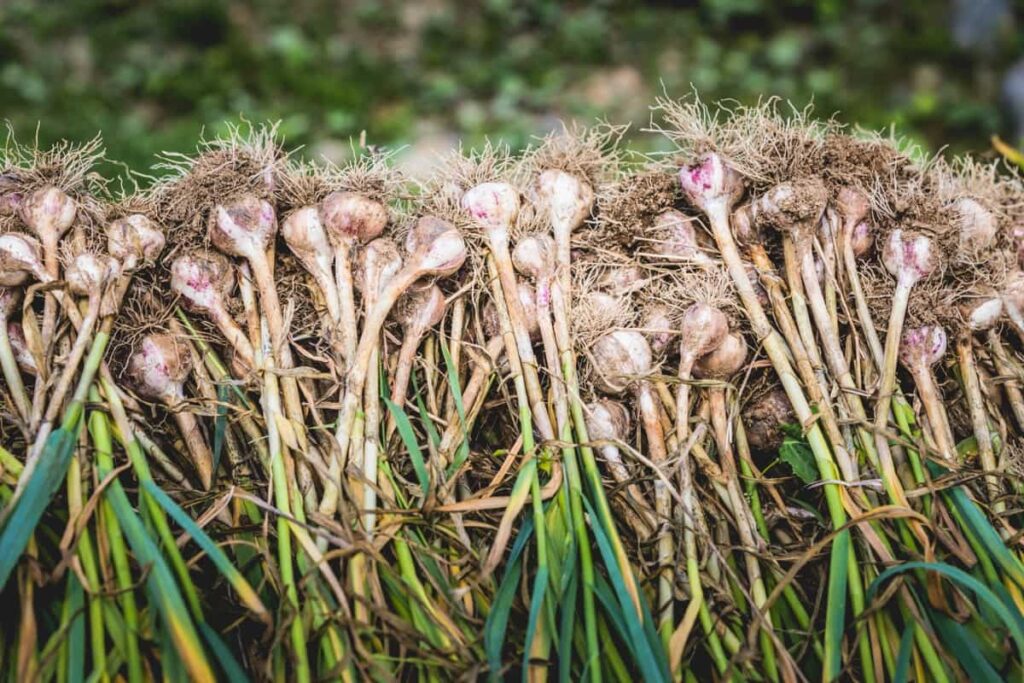
Note: Some popular Indian garlic varieties include Bhima Omkar, Bhima Purple, Yamuna Safed, Agrifound White (G-41), and VL Garlic 1.
How to Commercially Grow Garlic and Production
- Climatic requirements of garlic farming: Garlic grows well in a cool and moist climate during the growth of plants and dry periods during bulb maturity. It is a frost-hardy plant.
- Seasons for garlic cultivation: In hilly regions of India, Garlic is generally grown in two seasons. The first season is between June-July, and the second season is between October-November.
- Soil conditions for garlic production: Garlic can be grown on a diverse range of soils, but it grows best on fertile, well-drained loamy soils with a pH between six and seven. Highly alkaline and saline-sodic soils are not suitable for garlic cultivation.
- Preparation of land for garlic farming: The land must be fertile, have high organic content, and be free from volunteer plants with good drainage facilities. Good irrigation facilities are also needed. Create ridges and furrows with a spacing of 30 cm or beds with the regular/required sizes by ploughing the ground to a fine tilth. The distance between cloves is 15 x 10 cm.
- Seed rate of garlic for sowing: Cloves of 8-10 mm diameter are selected for better yield and quality. About 500 to 600 kg cloves of 7-10 mm diameter are needed to plant one hectare.
- List of garlic varieties: Some popular garlic varieties grown in India are Agrifound White, Yamuna Safed, Godavari, Shwetha, Phule Beswant, Ooty 1, VL Garlic 1, and Agrifound Parvati.
- Fertilizer application/Fertilizer dosage in Garlic farming: Garlic responds very well to organic manures, especially compost, and vermicompost. For normal fertile soil, 50 tons of farmyard manure, 100 kg N, 50 kg P, and 50 kg K/ha through chemical fertilizers are recommended. Micronutrients also increase its growth and yield potential.
- Control of rubberization in Garlic farming: Excessive application of N is avoided to minimize rubberization. Using Ammonium sulfate is advisable. Spraying of 1500 ppm of CCC on the 30th day of planting. Application of 0.2 % Boron 0.1% Sodium molybdate on the 30th, 60th, and 90th days after planting.
- Weed management in Garlic cultivation: Weeding is done 30 days after planting, and the second is done 30 days after the first weeding. Hand-hoeing the crop just before bulbs form helps set up bigger-sized, well-filled bulbs. Pendimethalin @ 3.5 liters +1 hand-weeding gives good control of broadleaved weeds.
- Irrigation/Water management for garlic cultivation: Garlic needs irrigation at one-week intervals during vegetative growth and 10-15 days at maturity. Excessive irrigation results in the sprouting of Garlic, and irrigation after a long spell of water scarcity results in bulbs splitting.
In case you missed it: A Comprehensive Guide to Saffron Farming Business Plan: Maximizing Your Harvest, Successful Saffron Farming Strategies
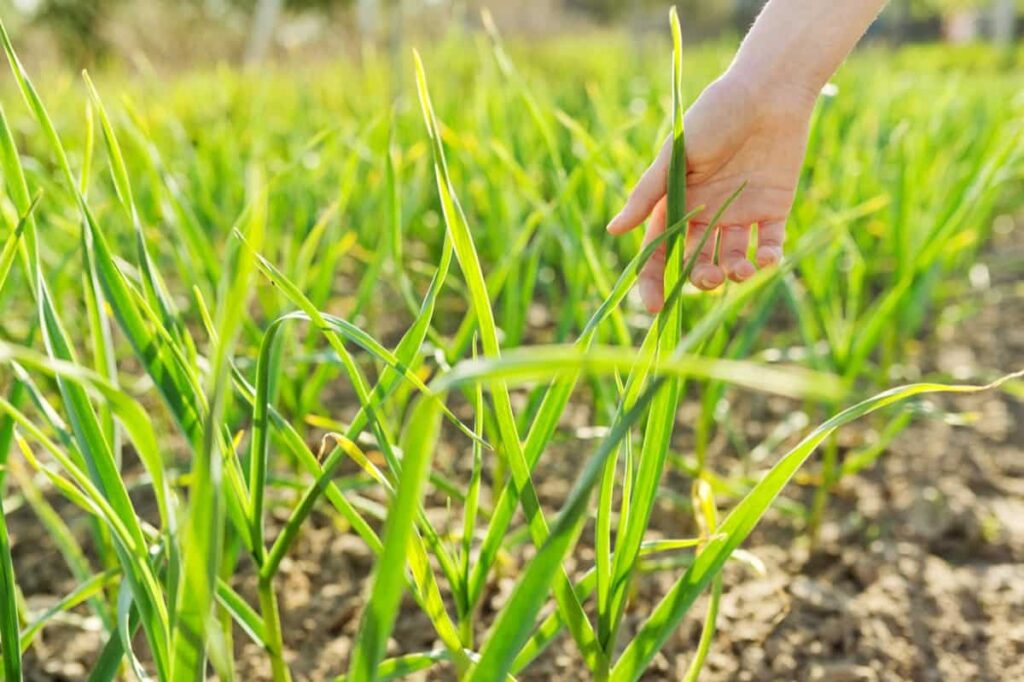
- Plant protection/Insect pest and disease management in Garlic cultivation: Common insect pests that attack Garlic include Onion thrips and Onion Maggots. Onion thrips feed on the leaf tissue, leading to silvery-white, curled, and dried leaves. Onion Maggot causes the larvae to bore into the bulbs, leading to flabby and yellowish plants withering in the field and rotting in storage conditions. Basal Rot disease of Garlic is caused by Fusarium oxysporum f.sp. cepae can be managed by crop rotation and soil drenching with Copper oxychloride 0.25%.
- Maturity and harvesting indices of garlic: harvesting process begins when the tops of the garlic plants start turning yellowish or brownish, showing signs of drying up and bending over. At this point, the cloves become firm to the touch. Properly harvested garlic bulbs are clean, white, and well-cured with dried neck and outer skins. In Garlic farming, bulbs are extracted along with tops and windrowed, gathering several rows in each row for curing and drying.
- The yield of garlic: Garlic bulb yields range from 100 to 200q/ha depending on the variety and location.
- Garlic storage: Garlic lasts eight months at room temperature. Sun-dry it before storing it to prevent fungus damage in storage conditions.
Ideal Conditions and Tips for Garlic Cultivation
- Garlic requires a cool and moist climate for bulb development and vegetative growth, while a warm and dry climate is needed for maturity.
- Exposing young plants to temperatures lower than 20⁰C for 1-2 months would hasten bulb formation, but prolonged exposure to lower temperatures would reduce yield.
- The optimal day length for bulb formation is 13-14 hours for long-day Garlic and 10-12 hours for short-day Garlic.
- Garlic is planted as kharif (June-July) and rabi (October-November) crops in India, depending on the region.
- Loamy soil with natural drainage, pH of 6-8, and rich organic content is optimum for garlic cultivation.
- Garlic requires frequent irrigation, but too much or too little water can cause problems.
- Modern irrigation techniques like sprinklers and drip irrigation are recommended for better yield.
- Fertigation, using drip irrigation to apply fertilizers, is an efficient method for garlic farming.
- Alternating Garlic with leguminous crops can improve soil fertility and boost yield.
In case you missed it: Rosemary Farming Business Plan: A Step-by-Step Guide to Growing and Selling Profitable Herbs
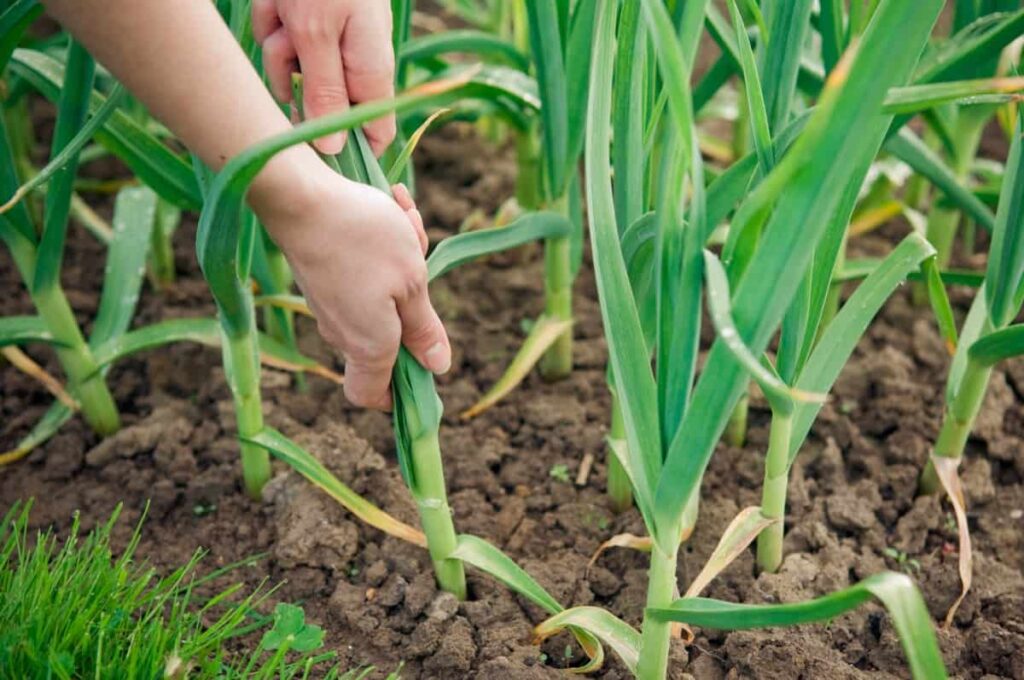
Project Report on Garlic Cultivation
- Garlic cultivation requires well-drained soil with a pH range of 6.0 to 7.5. The ideal time for planting Garlic is from September to November. The garlic crop needs regular irrigation and fertilization. Adequate quantities of nitrogen, phosphorus and potassium are necessary for good yield.
- Garlic is susceptible to pests and diseases like white rot, rust and thrips. Regular spraying of insecticides and fungicides is necessary to prevent damage to the crop. Garlic bulbs are harvested when the plants’ tops turn yellowish or brownish and dry up. The bulbs are then cured and dried before being marketed. Garlic cultivation is a labour-intensive activity; adequate labour should be available during planting, weeding and harvesting.
- Proper storage and transportation facilities are essential for maintaining the quality of the garlic bulbs. The profitability of garlic cultivation can be enhanced by adopting good agricultural practices and marketing the products effectively.
Cost and Profit Report of Garlic Cultivation:
- Investment: The total investment required for cultivating Garlic in one hectare of land is Rs 50,000-65,000. This includes the cost of seeds, fertilizers, plant protection chemicals, and labour.
- Yield: The average yield from one hectare of garlic farm is 40-60 quintals based on variety. Take an average of 25–30 quintals.
- Cost of garlic: The average cost in the market is Rs 3400-5500 per quintal. Take an average of 4500 per quintal.
- Income: The total revenue from the garlic farm is calculated by multiplying the total yield by the cost per unit, which amounts to Rs 90,000-1,50,000.
- Profit: The profit from the garlic farm is calculated by subtracting the total investment from the total income, which amounts to Rs 50,000-90,000.
Market Research and Analysis of Garlic Farming
- The global garlic market is expected to grow at a CAGR of 4.7% from 2021 to 2026. The Asia-Pacific region dominates the global garlic consumption and production market, with China being the largest producer of Garlic.
- The demand for Garlic is increasing due to its various applications in the food and healthcare industries. Garlic is widely used in food preparations, such as chutneys, pickles, curry powders, curried vegetables, and meat products.
- The price of Garlic is subject to fluctuations due to various climatic. Using Garlic as a flavouring agent in multiple cuisines also drives the demand for Garlic in the global market.
In case you missed it: From Seed to Sale: Creating a Business Plan for Clove Farming and Tips for Starting a Clover Production Business
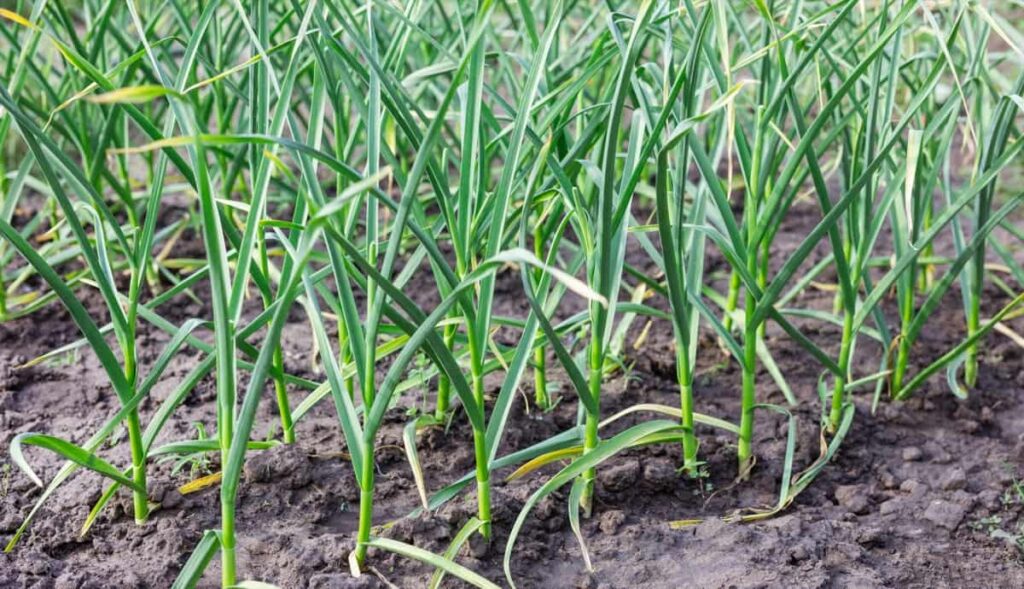
Garlic Farming Business Plan
Garlic farming has good potential for profitability due to the high demand for Garlic in various industries such as food processing, herbal products, and the pharmaceutical industry. Additionally, it is a relatively low-maintenance crop with low production costs. Proper planning and execution are key to success in this business.
- Land selection and preparation, including soil testing and choosing suitable garlic varieties.
- The investment plan includes costs for seeds, fertilizers, irrigation systems, labour, and other expenses.
- The marketing plan includes identifying potential buyers, market demand, and pricing strategies.
- Harvesting and post-harvesting plan, including drying and storage techniques to maintain garlic quality.
- The risk management plan includes strategies to mitigate risks such as pests and weather-related problems.
Business Plan Components of Garlic Farming
- Executive summary: This section summarizes the business plan, including the business goals, products or services, target market, marketing strategies, financial projections, and funding requirements.
- Company overview: This section provides detailed information about the company, such as its history, mission, vision, goals, legal structure, and ownership.
- Market analysis: This section analyzes the garlic farming industry, including market size, trends, competition, and customer needs. It also identifies the target market and outlines strategies to reach them.
- Products and services: This section describes the garlic products and services offered, including varieties, sizes, packaging, and distribution channels.
- Marketing and sales strategies: This section outlines the marketing and sales strategies to promote the products and services, such as advertising, public relations, social media, and trade shows.
- Management and organization: This section details the organizational structure, management team, and key personnel responsible for the operations, production, marketing, and financial management.
- Financial projections: This section provides detailed financial projections, including income profiles, balance sheets, cash flow statements, and breakeven analysis, based on various scenarios.
- Funding requirements: This section outlines the funding requirements for the garlic farming business, including start-up costs, working capital, and sources of financing, such as loans, grants, and equity.
In case you missed it: The Ultimate Guide to Creating a Profitable Turmeric Farming Business Plan
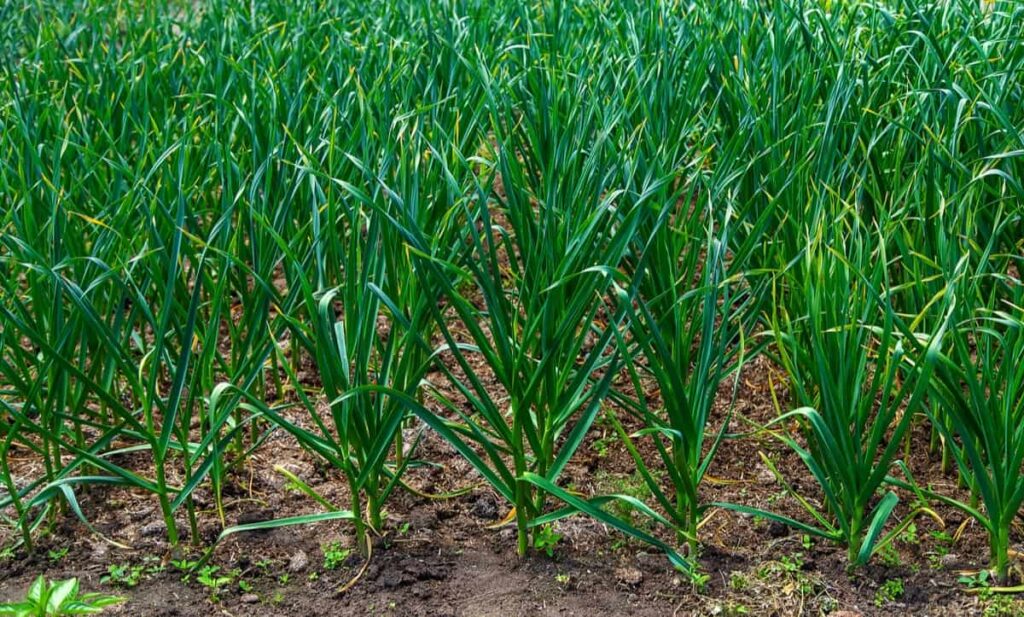
Conclusion
Garlic farming can be a profitable business with proper planning and execution. A comprehensive garlic farming business plan that includes all the necessary components can help maximize profits and ensure long-term success in the industry.
- Management Pests and Diseases in Your Cotton Field
- Sheep Farming Business Plan for Beginners
- Aquaponic Farming at Home: A Step-By-Step Guide
- Profitable Village Farming Business Ideas in 2024
- High-Yield Aquaculture: Fast-Growing Fish for Farming
- Effective Fish Pond Construction Techniques for Beginners
- Irrigation and Water Management in Pineapple Farming
- Blossom to Harvest: Mastering Flowering and Pollination in Papaya Farming
- Pig Fattening Essentials: From Selection to Sale for Beginners
- Raising Wagyu Cattle: A Complete Guide for Premium Beef Production
- Soil Types and Their Water Holding Capacity
- Optimizing Irrigation Schedules for Coconut Groves for Enhanced Yield
- Espresso Your Garden: Coffee Grounds for Healthier Acid-Loving Plants
- The Best Soil Mix for Snake Plants: How to Mix Your Own Snake Plant Soil
- Green Thumb Success: Expert Tips for Cultivating Greenhouse Beans All Year Round
- Bloom All Year Round: The Ultimate Guide to Indoor Hyacinth Care
- Eco-Friendly Gardening: How to Make Liquid Fertilizer from Kitchen Waste
- Ultimate Guide to Grow Anise in Pots: Explore Seed Propagation to Harvesting
- Guide to Raising Chester White Pigs: Discover Breed Facts to Growth Management
- Mastering the Elegance: The Ultimate Guide to Weeping Cherry Tree Care, Planting, and Maintenance
- Ultimate Guide to Planting Garlic in Grow Bags: Growing Strategies for Beginners
- How to Fix Spider Plant Leaf-Related Problems: Natural and Organic Remedies
- 10 Reasons Why Your Tulsi Plant is Shedding Leaves: Home Remedies and Solutions
- Optimizing Growth and Yield: The Advantages of Palm Bunch Ash Fertilizer
- Utilizing Neem Oil Extract as a Natural Pesticide for Hydrangea
- From Soil to Harvest: Various Ways in Which Farmers Can Use AI Tools
- Steps to Encourage and Induce Citrus Flowers: A Comprehensive Guide
- How to Fix Snake Plant Leaf-Related Issues: Natural and Organic Remedies
- Transform Your Garden into a Fragrant Oasis with Raat Ki Rani (Night Blooming Jasmine)
- Discover the Ideal Chicken Breeds for Philippine Farms
- How to Create a Poultry Egg Farm Business Plan for Profits
- Grow Lemon Cucumbers Like a Pro: Insider Techniques for Bountiful Yields
- Ultimate Guide to Caring for Your Pink Princess Philodendron: Tips for Thriving Variegation
- Areca Nut Profit Per Acre: Calculating Yield and Cost of Cultivation
- How Kaveri Chicken is Becoming a More Profitable Breed in Indian Backyards
- Transform Your Barn: 9 Steps to Convert a Horse Stall into a Chicken Coop
